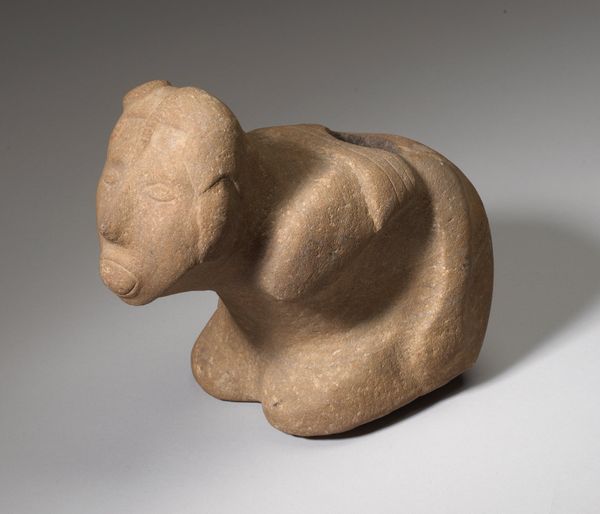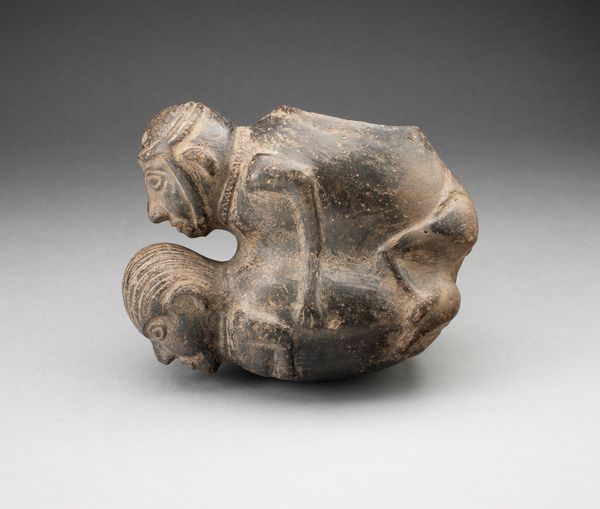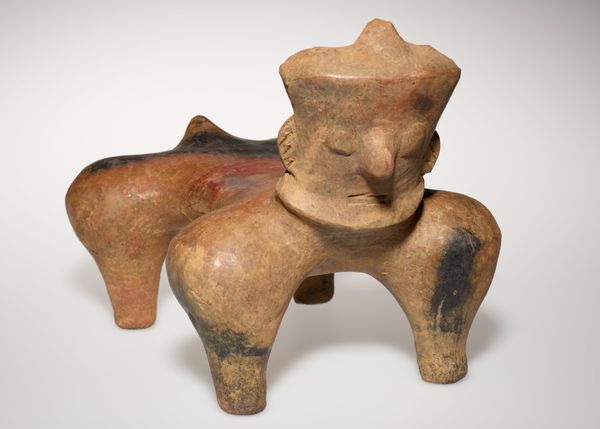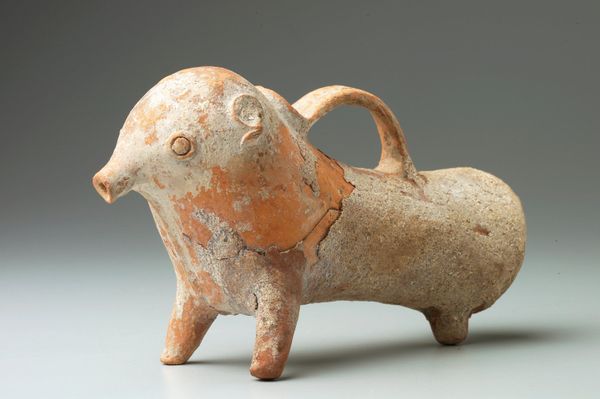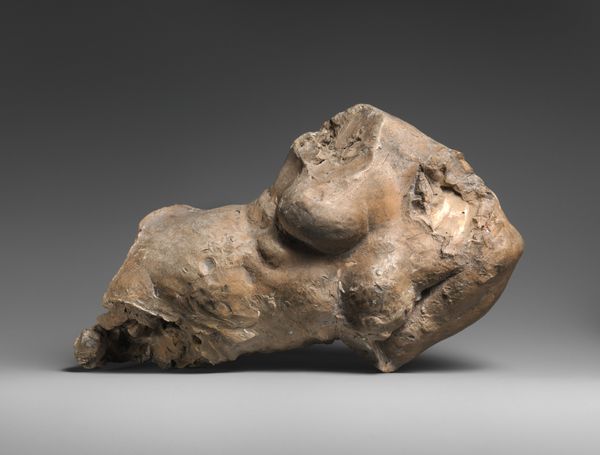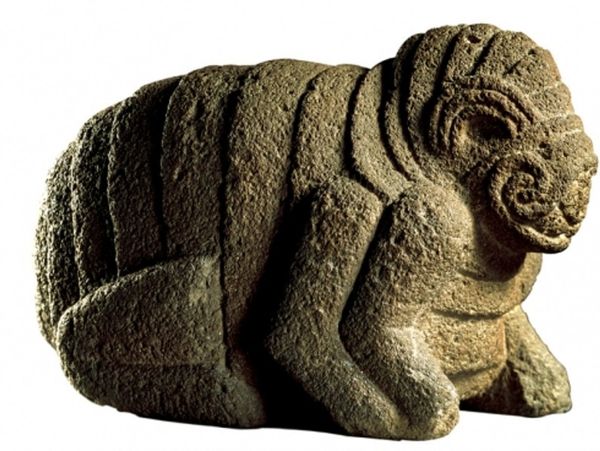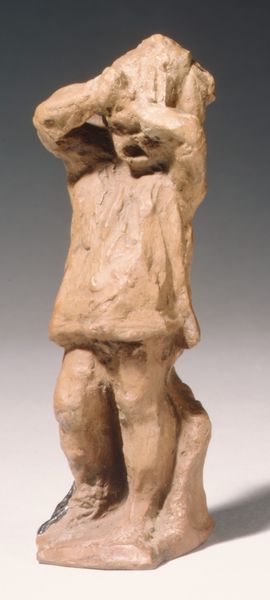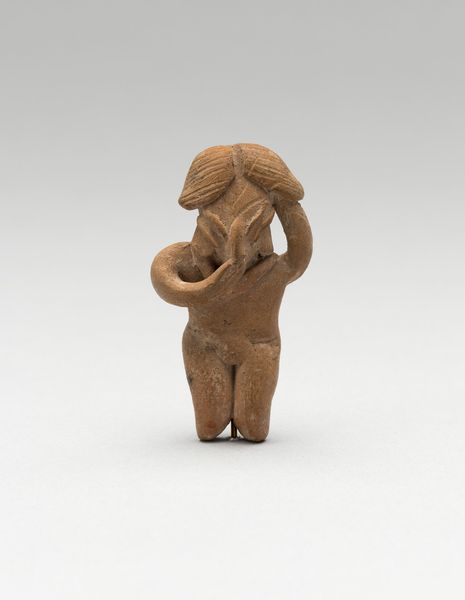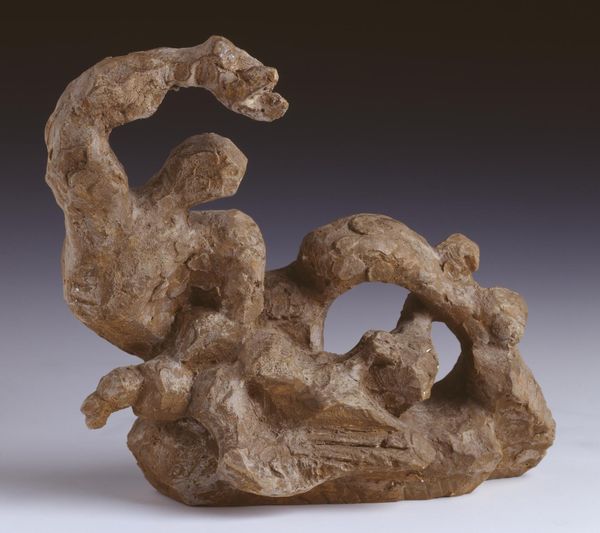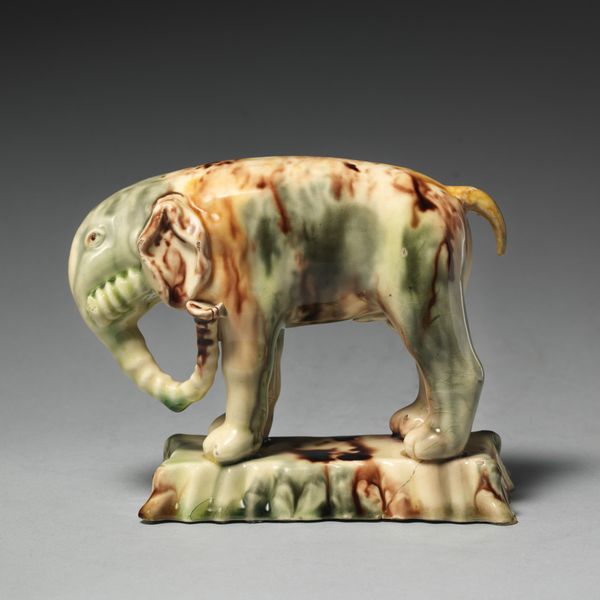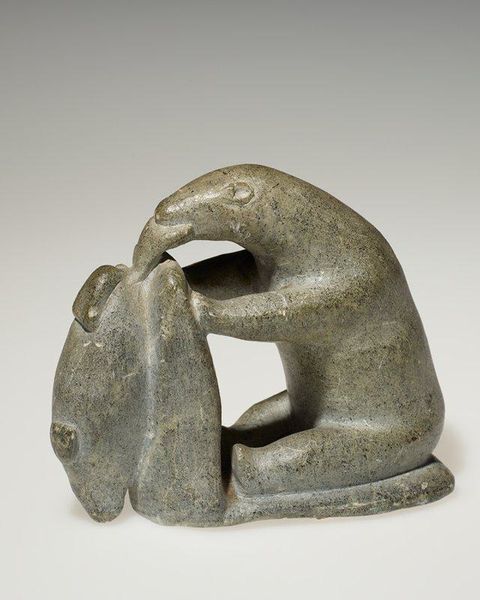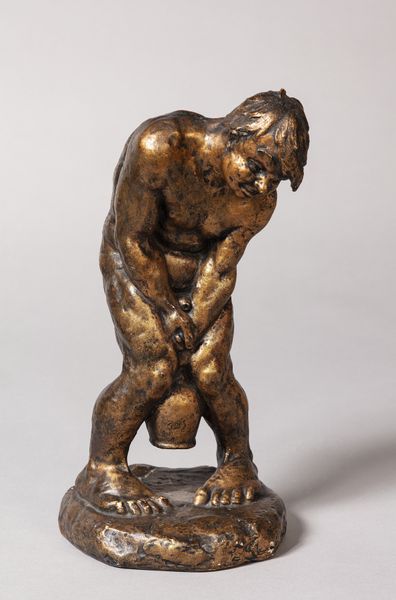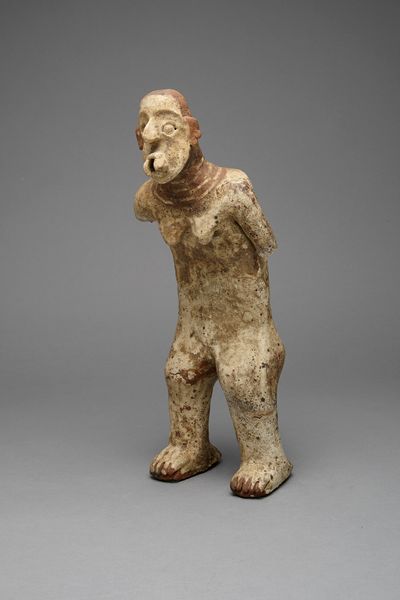
sculpture, wood
#
animal
#
sculpture
#
figuration
#
form
#
sculpture
#
wood
Dimensions: 25 cm (height) x 25.6 cm (width) x 18.6 cm (depth) (Netto)
Editor: So, here we have Niels Skovgaard's "Havhesten, uden hale" from 1912, a wood sculpture. It’s quite striking, almost like a primal, elemental form. It feels heavy and grounded despite the missing tail. What do you make of it? Curator: It's intriguing how Skovgaard presents this 'sea horse' not as a creature of fairytale whimsy, but something profoundly rooted in the earth. This absence, the 'uden hale', is fascinating. A tail is essential for balance and movement in many animals, and by omitting it, Skovgaard invites us to consider the symbolic weight of incompleteness and perhaps even vulnerability. Editor: Incompleteness… that makes me think about how we often use animal imagery to project human qualities. Curator: Precisely. Horses, historically, represent power, virility, and freedom. The 'sea horse' element further connects it to the unconscious, the watery depths of the psyche. By stripping it of its tail, does Skovgaard diminish these traditional associations? Or does he create space for new ones, related to endurance and perhaps a melancholic contemplation? Look at the downward curve of the neck - what feelings does that evoke in you? Editor: A sense of introspection, maybe? As if it's burdened by something, turned inward. Curator: And how might that connect to Danish cultural identity in the early 20th century, a time of both national romanticism and emerging modernism? Were they reconsidering old heroic ideas? Perhaps this sculpture, while depicting a mythical creature, is holding up a mirror to contemporary Danish society. What might a tailless horse symbolise in that context? Editor: That’s really insightful. It makes you wonder about what Skovgaard was consciously or unconsciously communicating about a sense of loss or reassessment through a well known form stripped back to its rawest essence. Curator: Absolutely. It's a powerful reminder of how artists imbue forms with layered meanings that speak across time and culture, even within apparent absence.
Comments
No comments
Be the first to comment and join the conversation on the ultimate creative platform.
